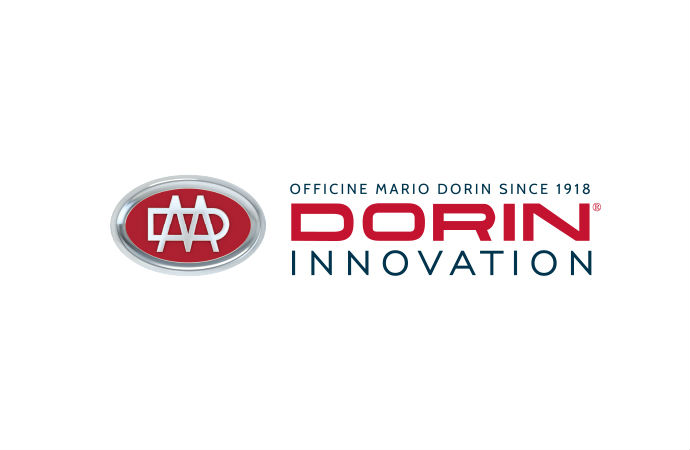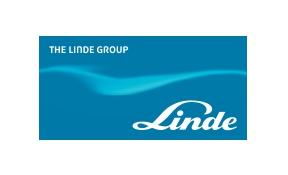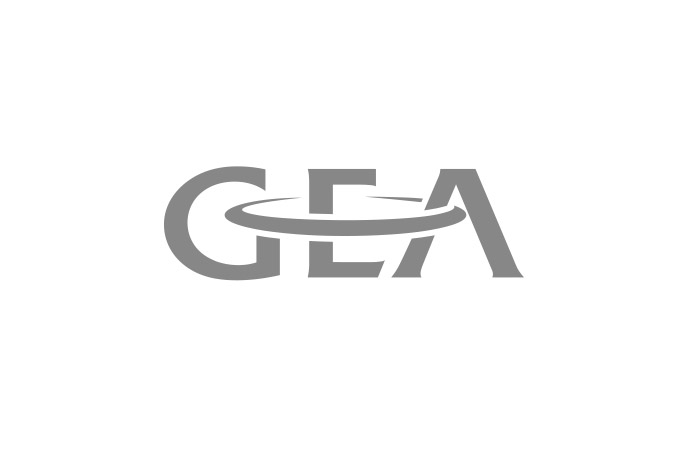Hydrocarbons are finally on the verge of being approved for use in domestic refrigerators in the United States, opening up a vast new market for Greenfreeze and other hydrocarbons based domestic refrigeration technologies. hydrocarbons21.com has talked to Claudette Juska from Greenpeace US to learn more about what this development can mean in terms of climate and economic impact.

hydrocarbons21.com: Hydrocarbons have been for decades in use in domestic refrigerators in Europe and China, namely since Greenpeace has developed the Greenfreeze technology in the early 1990s. Why did it take so long for the U.S. to consider approving hydrocarbons in domestic refrigeration? What was blocking the way and what is still delaying the process?
C.J.: The main problem is that we have different regulations and standards in the U.S. Some political differences too. But when it comes to the regulations, we have a department in the Environment Protection Agency (EPA) that has to review refrigerants before they can be listed as acceptable for use. It is quite a thorough review that looks at the environmental impact, the impact on people, safety and other things. So it is quite a lengthy review that I believe is not necessary in other countries.
A second hurdle to the introduction of hydrocarbons in the U.S. is that the standards writing organisation Underwriters Laboratories (UL) which writes safety standards for the U.S., when revising the standards to include flammable refrigerants, only allowed a 50g charge, unlike the international standards that allow 150g of hydrocarbons in the refrigerator.
These are the two things that have held back hydrocarbons the most. But then we have also a powerful chemical industry lobby in the U.S. that has been pushing against hydrocarbons for a long time and in some cases has been misinforming consumers and industry about the use of hydrocarbons, in some cases overstating the risks involved. That is a big problem in the U.S.
hydrocarbons21.com: Would you expect that the US industry encounters difficulties in embracing hydrocarbons, i.e. flammable refrigerants?
C.J.: I think the main problem companies are going to encounter when the EPA finally completes the SNAP process and allows hydrocarbons to be used, will be the charge limit they have established of 57g. In the US the refrigerators are quite big, so 57g is probably not enough charge for a lot of refrigerators. This is going to limit the adoption in the U.S.
GE who has announced the introduction of a refrigerator with hydrocarbons, has developed a way to get around this problem. But I think it will take most manufacturers some time and effort to do the same.
Along with the EPA approval, UL is currently also considering changing the standards to allow more than 50g of refrigerant, so somewhere in the future we might get a standard that is more aligned with the international standard of 150g.
hydrocarbons21.com: You say the UL is thinking about changing the standard. Is there already a timeframe when we can expect to see this happen or it is only in the early stages of being considered?
C.J.: It is only in the early stages. A proposal has been submitted but the standard writing process is very thorough so it can take a while for the standard committee to review the proposal and perform the proper analysis to determine whether or not there are any safety implications. But given that 400 million hydrocarbon refrigerators are already being safely used around the world, it’s hard to imagine the analysis turning up major issues.
hydrocarbons21.com: What impact can this change in legislation have on the U.S. market? Will it open up opportunities for natural refrigerants?
C.J.: The greatest benefit of the SNAP approval is that once manufacturers begin to use hydrocarbons in refrigeration in the U.S., it can spark change in other sectors as well.
Up until now there has been no introduction of flammable refrigerants in the U.S. So just this first introduction of hydrocarbons is significant and will do a lot to open doors in other cooling sectors.
There are also important implication for the service and end-of-life industries. Some changes need to occur here as well in order to use flammable refrigerants. Up until now there was no such infrastructure in the U.S. Just the fact of these changes in the domestic refrigerator sector will have a big influence, because suddenly service, and maintenance and end-of-life infrastructure has to adapt and this is going to make it easier for other sectors to follow.
hydrocarbons21.com: We talked about the benefits of introducing hydrocarbons to the U.S. market but could there also be any drawbacks?
C.J.: We have not seen any drawbacks. Hydrocarbons not only have low global-warming potential, but also tend to be more energy efficient. Some of the hydrocarbon systems we see are among the most efficient in industry. We think that there are lots of positives coming out of it. And because the hydrocarbon refrigerators in other markets have such good safety records, we do not anticipate any drawbacks.
hydrocarbons21.com: How does Greenpeace judge the overall approach in the U.S. to mitigate emissions from refrigeration systems? Does the issue get the deserved attention? Are there noticeable initiatives in this respect?
C.J.: The US has been slower than other countries to adopt emission standards. Only really active in this respect is California who is the absolute leader in environmental legislation in the U.S. They are using the approach to require commercial installations to monitor andrepair leaks in order to reduce emissions. Which is important because the sector has really high emissions, so it is an interesting approach.
But the most interesting aspect of this approach is that it will create a burden on users of HFCs because they will have to incur costs for leak detection equipment, the reparation of leaks and the work involved. This might serve as incentive in the future to move away from the use of HFCs to hydrocarbons or other alternatives.
A second approach of the U.S. is in automotive air-conditioning. Car manufacturers will receive fuel-efficiency credits for their vehicle if they use low GWP refrigerants in the mobile air-conditioning systems. But these are really the only initiatives that the U.S. is taking so far to reduce emissions from refrigerants.
Then there is also the problem that when manufactures do come up with a design that can use alternative refrigerants like hydrocarbons, there is, like mentioned before, such a long process to get EPA approval, to get UL approval, that it really deters innovation in that respect. We definitely think that there is a lot more that the U.S. could and should be doing.
hydrocarbons21.com: Following the approval of hydrocarbons in domestic refrigeration, which other application with hydrocarbons could be next in the US? What are the industry talks?
C.J.: I think the next obvious to come into the market will be smaller systems, like room air-conditioners. There has been a lot of development in that sector and it seems like that this could move forward relatively quickly.
This is also another sector where UL has been looking at adopting new standards and making it easier for flammable refrigerants to get certified.
We definitely think that there is a lot of potential in this sector. Just in general the smaller equipment will probably be accepted first.
C.J.: The main problem is that we have different regulations and standards in the U.S. Some political differences too. But when it comes to the regulations, we have a department in the Environment Protection Agency (EPA) that has to review refrigerants before they can be listed as acceptable for use. It is quite a thorough review that looks at the environmental impact, the impact on people, safety and other things. So it is quite a lengthy review that I believe is not necessary in other countries.
A second hurdle to the introduction of hydrocarbons in the U.S. is that the standards writing organisation Underwriters Laboratories (UL) which writes safety standards for the U.S., when revising the standards to include flammable refrigerants, only allowed a 50g charge, unlike the international standards that allow 150g of hydrocarbons in the refrigerator.
These are the two things that have held back hydrocarbons the most. But then we have also a powerful chemical industry lobby in the U.S. that has been pushing against hydrocarbons for a long time and in some cases has been misinforming consumers and industry about the use of hydrocarbons, in some cases overstating the risks involved. That is a big problem in the U.S.
hydrocarbons21.com: Would you expect that the US industry encounters difficulties in embracing hydrocarbons, i.e. flammable refrigerants?
C.J.: I think the main problem companies are going to encounter when the EPA finally completes the SNAP process and allows hydrocarbons to be used, will be the charge limit they have established of 57g. In the US the refrigerators are quite big, so 57g is probably not enough charge for a lot of refrigerators. This is going to limit the adoption in the U.S.
GE who has announced the introduction of a refrigerator with hydrocarbons, has developed a way to get around this problem. But I think it will take most manufacturers some time and effort to do the same.
Along with the EPA approval, UL is currently also considering changing the standards to allow more than 50g of refrigerant, so somewhere in the future we might get a standard that is more aligned with the international standard of 150g.
hydrocarbons21.com: You say the UL is thinking about changing the standard. Is there already a timeframe when we can expect to see this happen or it is only in the early stages of being considered?
C.J.: It is only in the early stages. A proposal has been submitted but the standard writing process is very thorough so it can take a while for the standard committee to review the proposal and perform the proper analysis to determine whether or not there are any safety implications. But given that 400 million hydrocarbon refrigerators are already being safely used around the world, it’s hard to imagine the analysis turning up major issues.
hydrocarbons21.com: What impact can this change in legislation have on the U.S. market? Will it open up opportunities for natural refrigerants?
C.J.: The greatest benefit of the SNAP approval is that once manufacturers begin to use hydrocarbons in refrigeration in the U.S., it can spark change in other sectors as well.
Up until now there has been no introduction of flammable refrigerants in the U.S. So just this first introduction of hydrocarbons is significant and will do a lot to open doors in other cooling sectors.
There are also important implication for the service and end-of-life industries. Some changes need to occur here as well in order to use flammable refrigerants. Up until now there was no such infrastructure in the U.S. Just the fact of these changes in the domestic refrigerator sector will have a big influence, because suddenly service, and maintenance and end-of-life infrastructure has to adapt and this is going to make it easier for other sectors to follow.
hydrocarbons21.com: We talked about the benefits of introducing hydrocarbons to the U.S. market but could there also be any drawbacks?
C.J.: We have not seen any drawbacks. Hydrocarbons not only have low global-warming potential, but also tend to be more energy efficient. Some of the hydrocarbon systems we see are among the most efficient in industry. We think that there are lots of positives coming out of it. And because the hydrocarbon refrigerators in other markets have such good safety records, we do not anticipate any drawbacks.
hydrocarbons21.com: How does Greenpeace judge the overall approach in the U.S. to mitigate emissions from refrigeration systems? Does the issue get the deserved attention? Are there noticeable initiatives in this respect?
C.J.: The US has been slower than other countries to adopt emission standards. Only really active in this respect is California who is the absolute leader in environmental legislation in the U.S. They are using the approach to require commercial installations to monitor andrepair leaks in order to reduce emissions. Which is important because the sector has really high emissions, so it is an interesting approach.
But the most interesting aspect of this approach is that it will create a burden on users of HFCs because they will have to incur costs for leak detection equipment, the reparation of leaks and the work involved. This might serve as incentive in the future to move away from the use of HFCs to hydrocarbons or other alternatives.
A second approach of the U.S. is in automotive air-conditioning. Car manufacturers will receive fuel-efficiency credits for their vehicle if they use low GWP refrigerants in the mobile air-conditioning systems. But these are really the only initiatives that the U.S. is taking so far to reduce emissions from refrigerants.
Then there is also the problem that when manufactures do come up with a design that can use alternative refrigerants like hydrocarbons, there is, like mentioned before, such a long process to get EPA approval, to get UL approval, that it really deters innovation in that respect. We definitely think that there is a lot more that the U.S. could and should be doing.
hydrocarbons21.com: Following the approval of hydrocarbons in domestic refrigeration, which other application with hydrocarbons could be next in the US? What are the industry talks?
C.J.: I think the next obvious to come into the market will be smaller systems, like room air-conditioners. There has been a lot of development in that sector and it seems like that this could move forward relatively quickly.
This is also another sector where UL has been looking at adopting new standards and making it easier for flammable refrigerants to get certified.
We definitely think that there is a lot of potential in this sector. Just in general the smaller equipment will probably be accepted first.
MORE INFORMATION
Related stories














